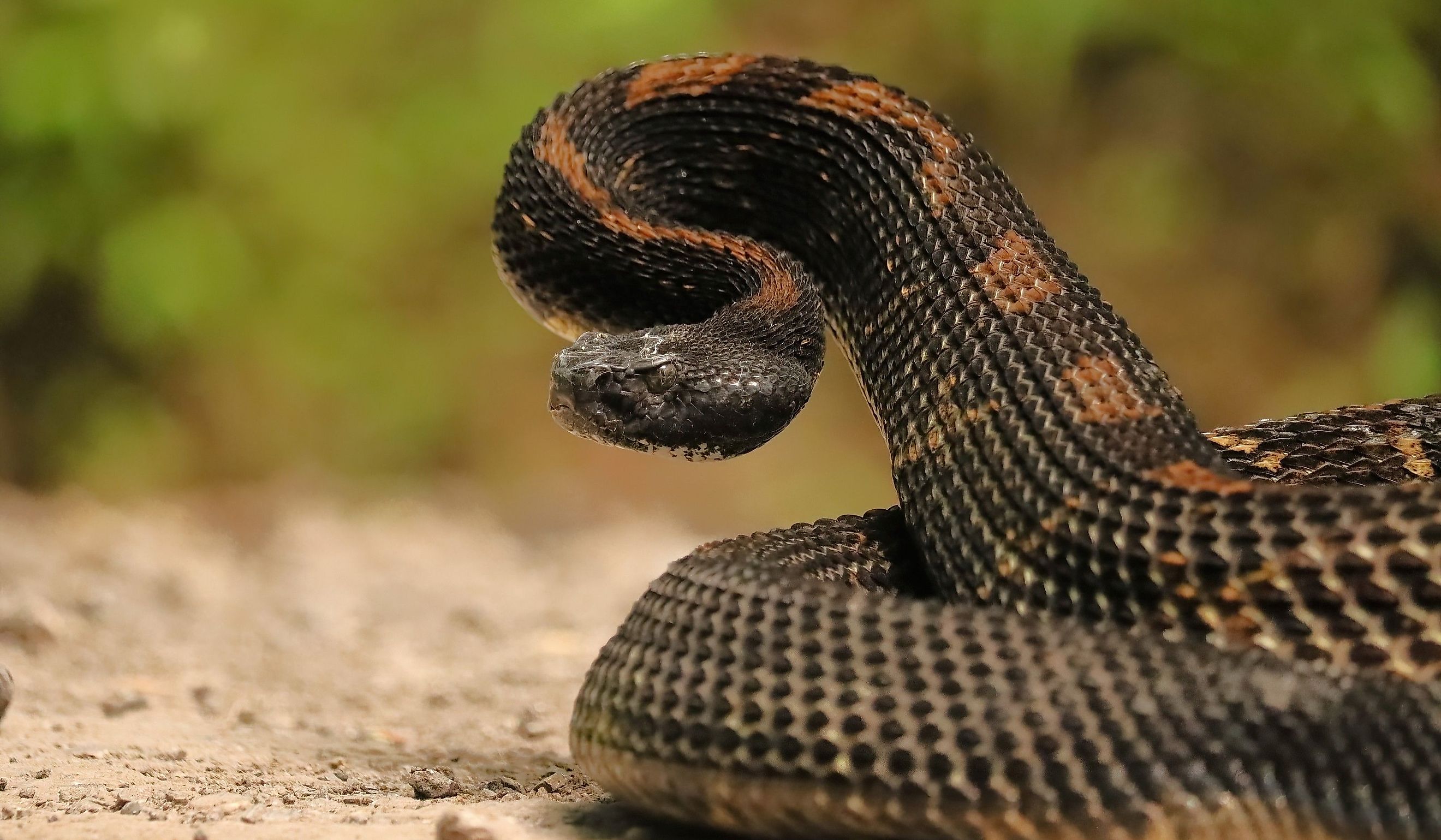
The Venomous Snakes Of Illinois
Located in the midwest, Illinois is home to several popular tourist destinations such as Wrigley Field and the Lincoln Home, as well as stunning natural attractions including Lake Michigan and the Shawnee National Forest. It’s also home to six venomous snakes.
If you’re visiting the prairie state, there is a chance you’ll encounter a rattlesnake, a copperhead, or a cottonmouth, but don’t panic. Learning about these species will help you avoid them and, if you do see one, know exactly what to do to stay safe. As with any local wildlife, the key is to treat them with respect so you can enjoy your trip to Illinois without worrying about its reptile residents.
Eastern Massasauga
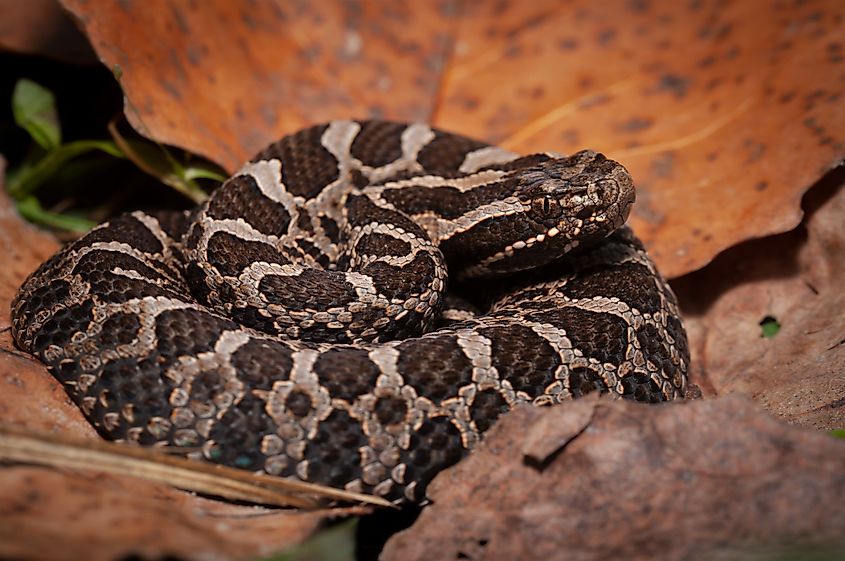
Sistrurus catenatus catenatus, the Eastern Massasauga is generally between 1.5ft and 2.5ft long with a brown or grey body and dark blotches along its spine and sides. This snake also has a rattle at the end of its tail.
The Eastern Massasauga likes fields, floodplain forests, wet prairies, bogs, and marshlands. It’s found in the northern two-thirds of Illinois and is considered endangered in the state. Active during the day, the Eastern Massasauga switches in the summer to become nocturnal and escape the heat. It tends to shelter in burrows and other underground crevices but will come out to the sun itself in open grass or hunt small mice, small birds, frogs, and other snakes.
When disturbed or threatened, the Eastern Massasauga will shake its rattle as a warning. While its venom is very potent, fatalities are rare as the snake can only inject a small amount when biting and typically shies away from human contact. Not only are Eastern Massasaugas endangered in Illinois due to habitat loss, but they are also federally classified as threatened.
Northern Copperhead
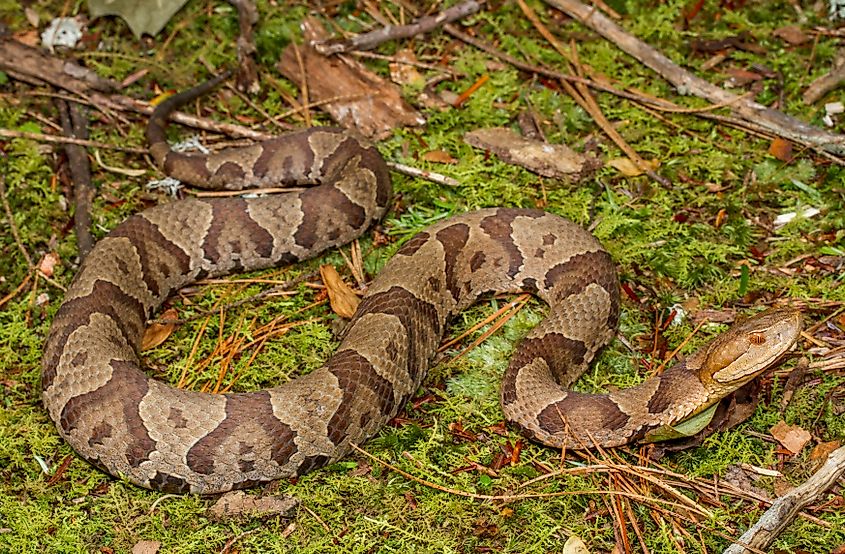
Northern Copperheads, or Agkistrodon contortrix mokasen, can be found in southern Illinois. The most likely places in the state to encounter them are the Shawnee Hills and the bluffs of the southern Mississippi River.
The average size of a Northern Copperhead is 2-3 ft, but they can grow up to 4ft long. Copperheads are easy to spot thanks to the distinctive rust or copper coloring of their head. Northern Copperheads range from light tan to dark brown; they have the signature hourglass-shaped bands of a Copperhead running down their back, thinner along the spine, and wider on the sides of the body. Young Copperheads are similar in color but have a yellow-tipped tail. Just because they’re immature doesn’t mean these snakes aren’t dangerous. Copperheads are born with venom and can give a venomous bite from birth.
Copperheads are shy and prefer to stay as camouflaged as possible, lying very still for long periods. This means hikers in rural areas need to stay alert, especially during the summer months when Copperheads are more active. If they’re surprised and feeling threatened, Copperheads will coil up tightly and raise their head above the ground in an intimidating pose. They may also vibrate their tail. Copperhead venom is generally not very potent, but you should seek medical attention right away if bitten.
Southern Copperhead
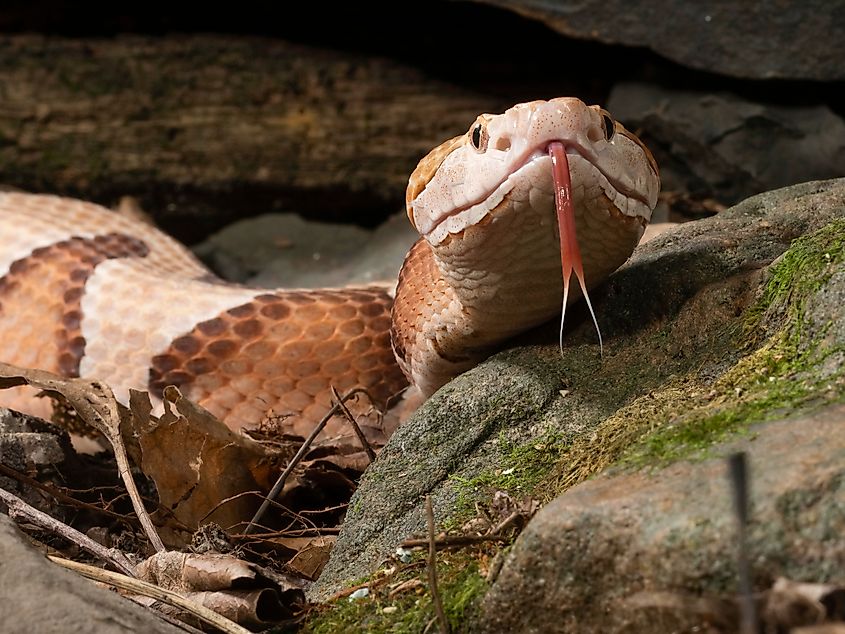
The Southern Copperhead, Agkistrodon contortrix contortrix, is found in the southern two-thirds of Illinois, preferring rocky hillsides, the edge of forests, and, in the summer, in meadows or fields.
Southern Copperheads can grow up to 4ft long and are larger than other subspecies. Like all copperheads, they are easily identifiable from the copper coloring on the top of their large, triangular heads. They are tan-colored with hourglass-shaped markings that range from dark brown to reddish-brown. Young Southern Copperheads are greyer with a bright, yellow-tipped tail. This snake mostly feeds on rodents, frogs, and cicadas. They can often be found around barns or outdoor sheds, where they hunt for mice and rats.
Osage Copperhead
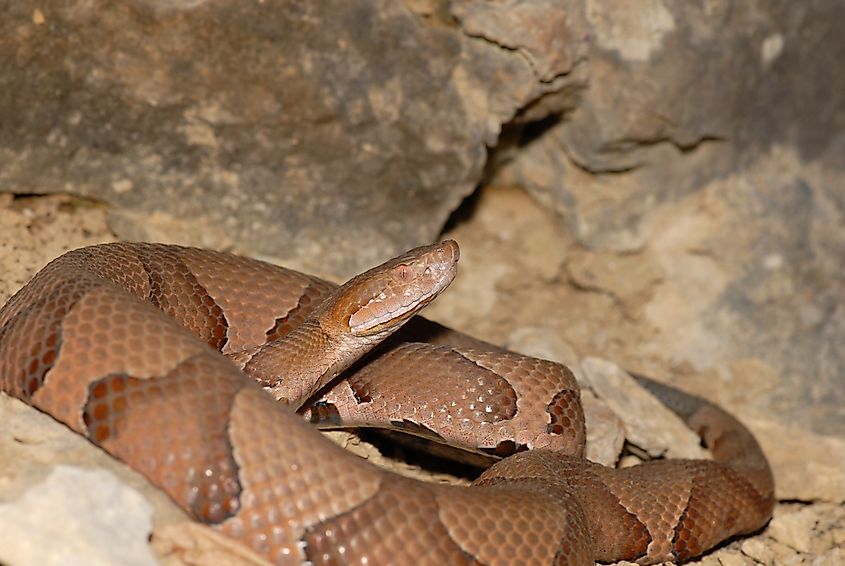
Also known as Agkistrodon contortrix phaeogaster, the Osage Copperhead is typically smaller than other subspecies, growing to 3ft. They have the same rust-colored heads and hourglass-marked bodies as other Copperheads but may have bands outlined in white.
Like Illinois’ other Copperhead species, the Osage Copperhead is found in the southern part of the state, along bluffs, hillsides, and forest edges. It feeds on rodents, insects, lizards, frogs, and other small snakes.
Like others of the species, it will coil up and lift its head when threatened. It may also shake its tail as a warning sign. Bites are rare from these snakes but can cause pain, throbbing and inflammation at the bite site, and nausea. If bitten, seek medical attention promptly.
Timber Rattlesnake
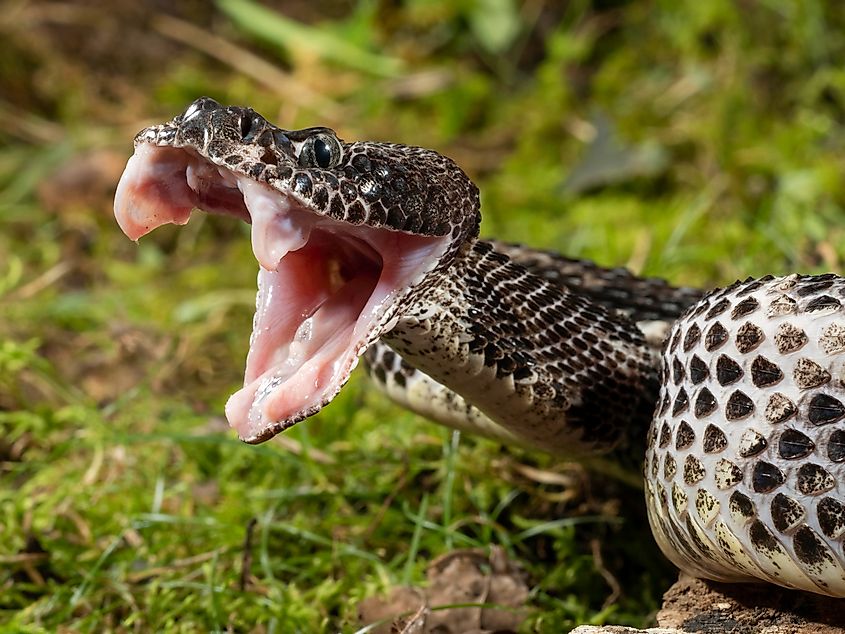
Crotalus horridus or the Timber Rattlesnake is considered threatened in Illinois where it is found in heavy forest, rocky outcrops, and bluffs. The snake is most commonly found in the southern part of the state, specifically in the Shawnee Hills area, but populations are in decline.
Growing between 3 and 5ft long, this is a large snake with jagged dark bands along its back. They may also have an orange or rust-colored stripe along their midback. You can also identify them from the black rattle at their tail, their elliptical pupils, and large, triangular heads.
Timber Rattlesnakes are active from April to October and eat rodents and birds. In summer, they hunt in upland forests where they can prey on squirrels, chipmunks, and other small mammals. In the winter, they shelter in dens in rock crevices. When disturbed, the snake will coil up and begin to shake its rattle as an alarm and warning sign.
Western Cottonmouth
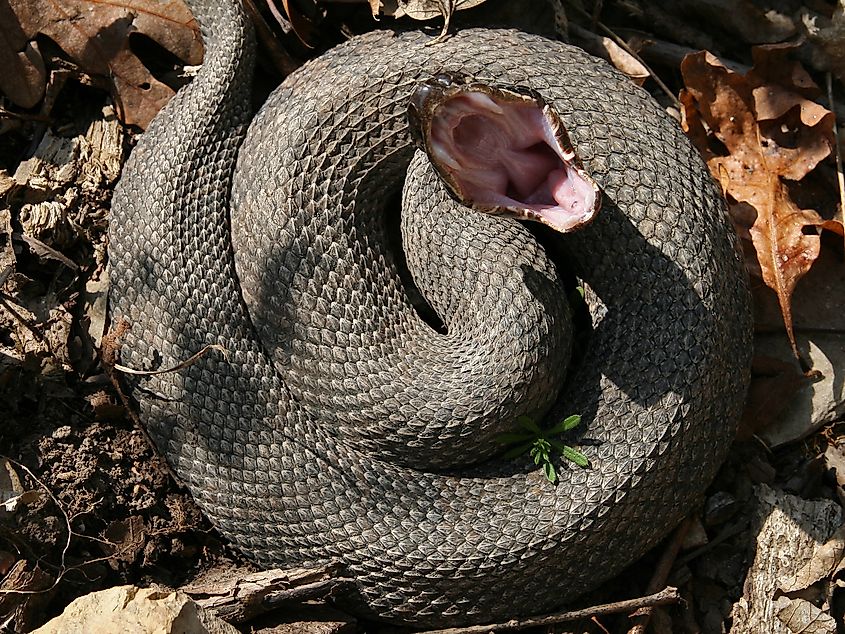
The Agkistrodon piscivorus leucostoma, or Western Cottonmouth, gets its name from its puffy white gums, displayed when the snake feels threatened and opens its jaws wide to scare off predators. While this is a terrifying sight, it’s also just a defense move. Like most snakes, the Western Cottonmouth is more interested in deterring attacks than biting people.
Found in the very southern tip of Illinois, Western Cottonmouths favor water habitats, specifically swamps or lakes. On average, they grow to 3ft long and have dark olive or brown bodies with dark brown bands around the back and sides. They also have a dark stripe running from their snout to their eye and upper lip. Newborns have a yellow-tipped tail that fades with age.
Western Cottonmouths can be found sunning themselves on logs or in the water, hunting for their prey, which includes fish, amphibians, other reptiles, and small mammals.
If you see a venomous snake during your trip to Illinois, don’t panic. While snake venom can cause tissue damage and even death in humans, this is very rare. In most cases, snake bites are non-lethal and resolve quickly if people get the proper medical attention. It’s also worth remembering that snakes are not aggressive by nature. They typically only strike as a defensive move when feeling threatened, so the best way to avoid a bite is to treat them with respect, know their habits and habitats, and give them space if you encounter them.











